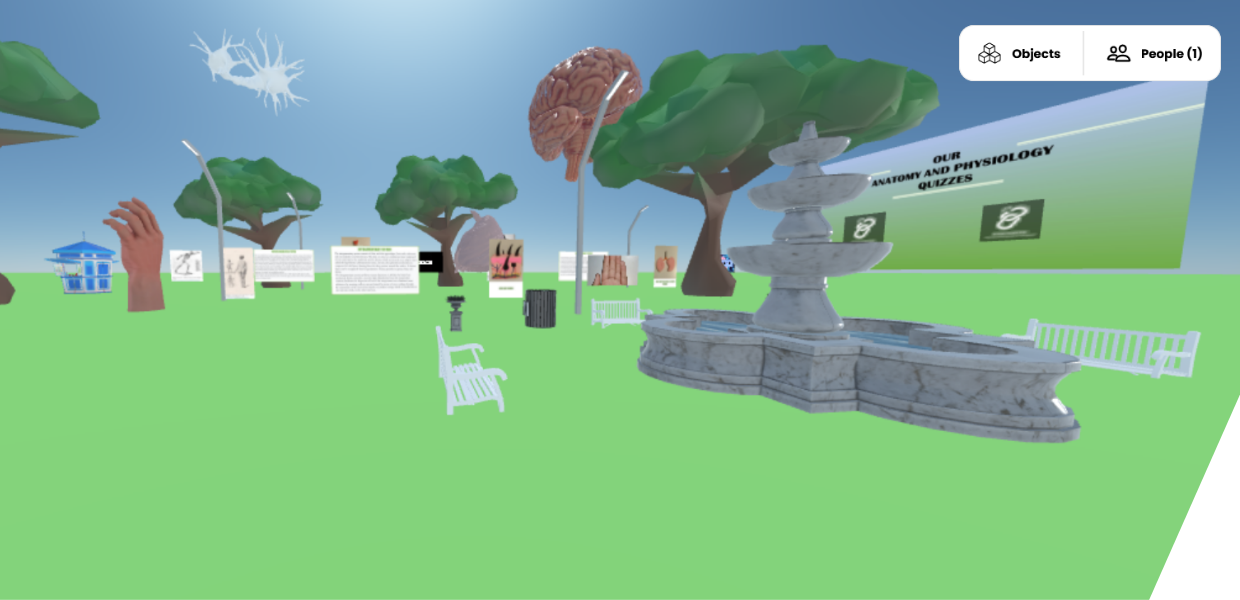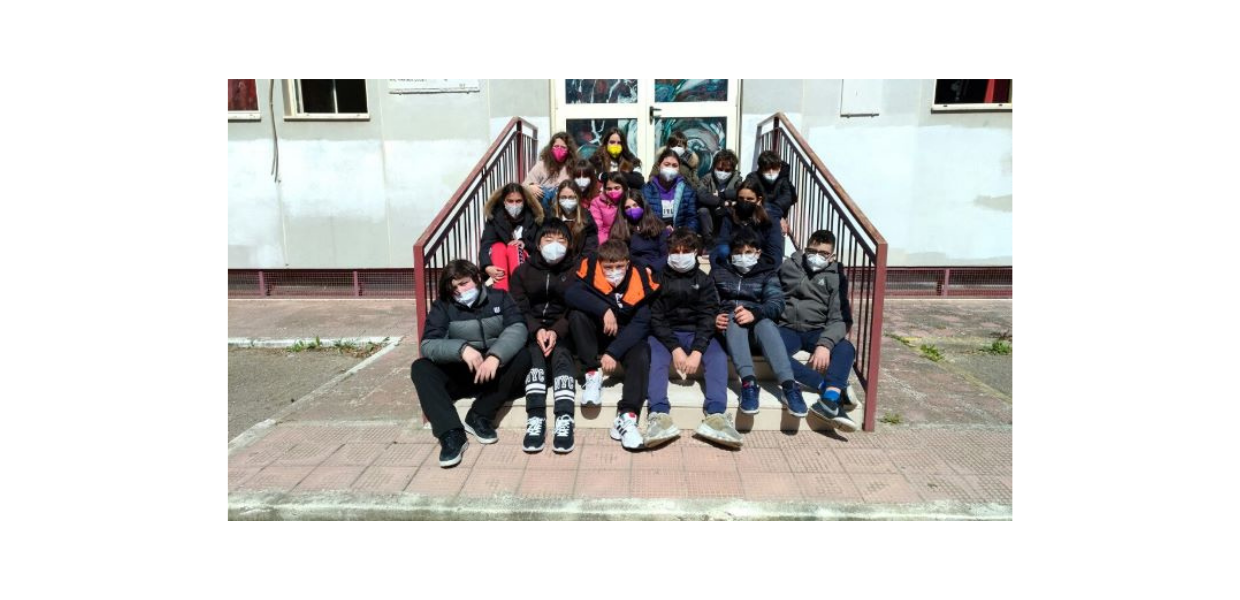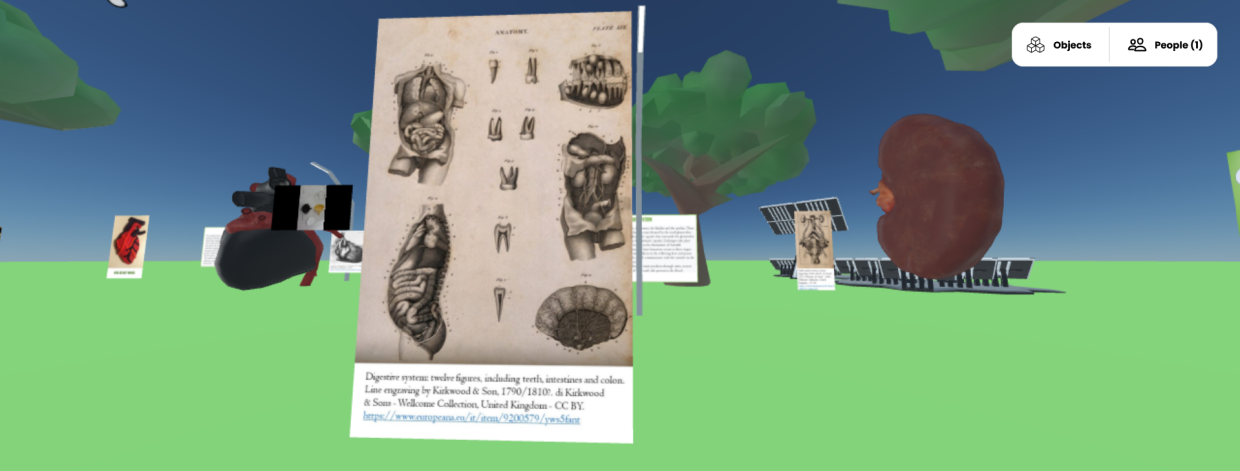Tell us about your winning entry, ‘Anatomical Open Air Museum’!
Our initial idea was to build a ‘surrealistic’ museum that brought together elements which could not co-exist in reality. We wanted to create an original exhibition, characterised by symmetry, without walls, immersed in the harmony of the famous ‘trulli’ of Unesco World Heritage. The trulli are ancient sustainable buildings located in South Italy that don't require heating and air conditioning.
The initial idea was developed thanks to the help of the students. I was really interested in a project that was student-centred, collaborative, inclusive, multimedial, manual and multicultural. Anatomy was an opportunity for my students to enhance creativity in creating material models and multimedia products.
We are satisfied with the final product and virtual space because it responds to the initial idea of an anatomy open-air museum, in which the modern is opposed to the ancient, mathematics to science, individual to collective work. The work, conceived within the framework represented by the New European Bauhaus, is characterised by the integration of different cultures and different media.
Can you say more about how your project was connected with the New European Bauhaus?
Our project perfectly aligns with the thematic axes of New European Bauhaus. It is the result of the students’ collective design and encompasses different disciplines. It bridges science, mathematics, technology, art, civic and digital education, and foreign languages such as English and Chinese. Our project connects with nature, the local culture and environment - particularly given that the ‘trulli’ we took as inspiration are sustainable and use solar energy. The project also focuses on hand craftsmanship and digital innovation. Great attention was given to the inclusion of foreign students and students with special needs, one of the key elements of the New European Bauhaus.
The museum that we created as part of the project is an open area which anyone can access to look at ancient drawings from Europeana. In order to create this virtual environment in line with the New European Bauhaus, it was necessary to deepen our understanding through the Europeana website and other resources. If I hadn't done this programme, I would never have known anything about the New European Bauhaus, as I teach Mathematics and Science, so Built with Bits has also greatly enriched my cultural background.
What do you think is the value of using digital cultural heritage and immersive technologies in education?
Digital cultural heritage allows us to overcome disciplinary separation, for example, encouraging students to consider a scientific topic from different points of view, including artistic and historical.
Immersive technologies improve student motivation thanks to the degree of involvement and level of entertainment they offer. They promote discovery and research, encourage active learning and problem solving skills, and offer better digital and scientific skills in a simulated reality. Motivation, enjoyment, inclusion, strengthening self-esteem, especially in children with learning difficulties, are extremely important for their active and productive collaboration and participation.
Given that 2022 is the European Year of Youth, have you considered other ways to engage students and young people with your winning project?
Our project concerns human systems, which are usually studied in the second class, such as the musculoskeletal system, the respiratory system, the cardiovascular system, the urinary system and the digestive system. I would like to continue working on this project next year. It could be enriched by adding the nervous system and the reproductive systems, so the virtual space would concern the entire human body. In fact, in the current project, there are suspended anatomical elements belonging to these two systems.





